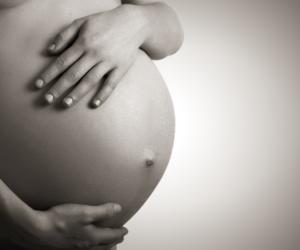Is My Child More Likely to Develop Autism if a Blood Relative Has Autism?

Autism characterized by impaired social interactions reduced verbal and non-verbal communication and stereotyped behavior and activities. These symptoms appear in early childhood and impair or limit everyday functioning.
Autism and genetics
Researchers believe that both environment and genetics play a role in autism. It is a matter of great concern that the rates of ASD have been increasing without an understanding of the underlying causes. Several studies of individuals with autism have found variations in the growth of several parts of the brain. Studies suggest that disruptions in natural brain growth in early development can be a cause of autism. Imperfect genes that control the development of the brain and manage the communication between brain cells can be the reason of these disruptions. Premature birth can increase the risk of autism. Gene function and development can also depend on environmental factors, but no particular environmental reasons have yet been delineated
The incidence of autism can be traced to heredity; that is it passes on from parents to offsprings. If a disease is heritable then its origin can be traced to genes. Scientists have determined the number of genetic reasons associated with autism. Although the relationship between genes and autism is complex; it is still unclear whether the condition is caused by interaction of multiple genes or the result of mutations that can have major effect
Statistics shows that 1 in every 166 people have autism. In parents having one child with autism, the risk for next child with autism is only 2-6%. But, if a single gene was the responsible for autism then the possibility of next child with autism would be 25-50%.
And if parents have two autistic children then the chances of having third one with autism are expected to be around 35%. This indicates that several genes are involved in the process. It is not as strange as it sounds. DNA (Deoxyribonucleic Acid) can and does vary from one generation to another.
Usually, the differences aren't significant but sometimes they are. For example, seven out of eight cases of dwarfism (condition of short stature) are the result of entirely new DNA changes.
To analyze these variations in DNA, a team of scientists compared the DNA of children with autism to their parents. The researchers determined that at least 10% of the children had extra or missing DNA compared to their parents. These changes in DNA may be a reason for the autism in children.
How do the researchers find the changes in DNA from one generation to another?
One can’t just check 6 billion letters of DNA of kids and their parents to identify the causes. This is costly and time-consuming too.
What the researchers decided to look at were big changes in DNA. Usually, scientists focus on minor differences: differences in one letter or couple of the code.
Then they realized that the major changes are important too. For example, major changes like missing of big chunks of DNA or any duplication.
The scientists divided the families into three groups. The first group had 99 families without any children with autism. Next group had 188 families who had one autistic child. And the last group had 47 families with more than one kid with autism.
The group of scientists gathered DNA from all the families (parents and children). Then they compared the collected data by using a test called CGH (comparative genomic hybridization) arrays. The main advantage of a CGH array is the ability to analyze all 46 chromosomes in a single test and to identify any DNA defects including missing or extra chromosomes and gain or loss of chromosome material much more precisely than traditional chromosome analysis.
The scientists were trying to find the DNA that was different in children with autism as compared to their parents. They found that approximately 10% of the children with autism in the families with a single kid with autism had big DNA variations compared to their parents. Around 3% of the child with autism had detectable DNA changes compare to their parents in families who had more than one child with autism. And only 1% of a child in families who had no child with autism had these types of DNA differences.
These results indicate that a missing or duplication of big DNA chunk is the one way to have autism. It also shows that DNA variation from generation to generation in many different places can be the reason of autism. This has found consistently in most of the researchers.
One of the best ways to study the effect of genes is to study and compare the incidence of the disease in identical and fraternal twins. Researchers have found that 56 to 95 percent of the incidence can be traced to genetics. Identical twins or monozygotic twins are produced by the bifurcation of a single fertilized egg; a large percentage of their DNA structure is, therefore, identical. While, fraternal twins or dizygotic twins are born from the fertilization of two eggs at the same time, therefore, they are less likely to have similar DNA structure. These are the best circumstances for a comparative study of the effect of genes on autism; the twins are raised in similar environment thus the variation in environmental factors is also controlled in this study.
The research concluded that if one identical twin has autism, the another twin has 76 percent chances of developing autism. While in fraternal twin, the percentage decreases to 34 percent in same-sex twins and 18 percent for a male-female pair.
The conclusion so far is that we do know that autism is affected by genes and it may be heritable. But, we have no clue about the exact genes that cause the condition.There are various questions are still left unanswered like why are parents of autistic children typically not- autistic, or in 25percent of the cases, why is one child autistic while the other is not in a pair of identical twins? There are several models which aim to explain the interaction of genes causing autism, however, none of them are fool-proof.













